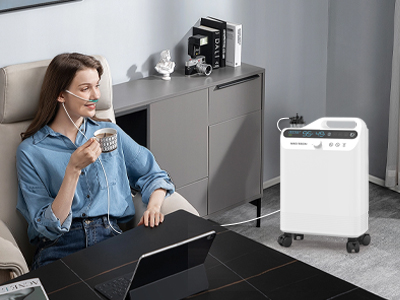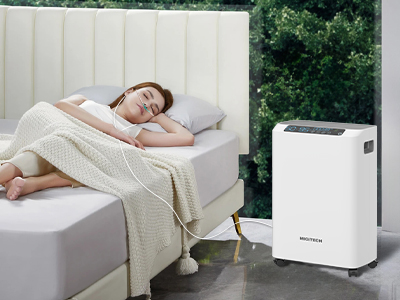05 Jan 2024
Oxygen concentrators, at their core, are medical devices designed to extract and deliver concentrated oxygen to individuals requiring respiratory support. Understanding their fundamental functionality is crucial before navigating the purchasing process.

Evolution in Home Healthcare
The evolution of oxygen concentrators has transformed home healthcare, offering a viable and efficient alternative to traditional oxygen delivery systems. Advancements have made these devices more user-friendly and accessible.
Understanding Oxygen Requirements
A. Respiratory Conditions and Oxygen Therapy
The type and severity of respiratory conditions greatly influence the oxygen needs of individuals. A comprehensive understanding of these conditions is essential in determining the right concentrator.
B. Consulting Healthcare Professionals
Healthcare professionals play a pivotal role in assessing and prescribing the appropriate oxygen therapy. Their guidance ensures the chosen concentrator aligns with the patient's medical needs.
Types of Oxygen Concentrators
A. Continuous Flow vs. Pulse Dose
Different concentrator models offer either a continuous flow of oxygen or deliver oxygen in pulses based on the user's inhalation. Understanding these modes is crucial for tailored therapy.
B. Portable vs. Stationary Models
The choice between portable and stationary models depends on the user's lifestyle and mobility requirements. Portable units offer freedom, while stationary units are optimized for home use.

Considerations for Home Use
A. Size and Weight
For home use, the physical dimensions and weight of the concentrator play a role in its practicality and integration into living spaces.
B. Noise Levels and Power Consumption
Quiet operation and energy efficiency are key considerations, especially for units that will be used in shared or quiet environments.
Battery Life and Power Sources
A. Importance of Battery Performance
For portable concentrators, battery life is a critical factor. Long-lasting batteries enhance mobility and convenience.
B. Compatibility with Various Power Sources
Versatility in power sources ensures usability in different settings, offering flexibility during travel or power outages.
Maintenance and Upkeep
A. Cleaning and Sterilization Guidelines
Regular cleaning is essential for maintaining the hygiene and longevity of the device. Understanding proper cleaning protocols is crucial.
B. Troubleshooting Common Issues
Familiarity with common issues and their solutions empowers users to troubleshoot minor problems, preventing disruptions in oxygen supply.
Additional Features and Innovations
A. Connectivity and Monitoring
Modern concentrators may come equipped with connectivity features, allowing users and healthcare providers to monitor usage and performance.
B. Advanced Technological Integrations
Exploring concentrators with advanced technological integrations ensures that users benefit from the latest innovations in respiratory care.
Cost Considerations and Insurance
A. Initial Investment and Long-Term Costs
Understanding the initial investment and long-term costs associated with a specific model is crucial for budgeting and financial planning.
B. Insurance Coverage and Reimbursement
Investigating insurance coverage and potential reimbursement options can alleviate financial burdens associated with purchasing an oxygen concentrator.
This comprehensive guide aims to equip individuals and caregivers with the knowledge needed to make informed decisions when selecting an oxygen concentrator. From understanding specific medical needs to exploring the latest technological features, this guide is a roadmap for navigating the complex terrain of oxygen concentrator acquisition.
Keywords: oxygen concentrator
Originally published 05 Jan 2024, updated 05 Jan 2024.